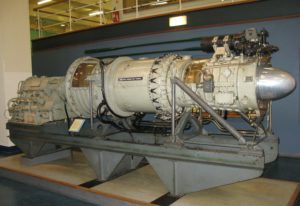Skip to content
 Changes in ambient temperature have an impact on fullload power and heat rate of a gas turbine, but also on part-load performance and optimum power turbine speed. Manufacturers typically provide performance maps that describe these relationships for ISO conditions.
Changes in ambient temperature have an impact on fullload power and heat rate of a gas turbine, but also on part-load performance and optimum power turbine speed. Manufacturers typically provide performance maps that describe these relationships for ISO conditions.
The excerpts are taken from a paper “Gas turbine performance” presented by Rainer Kurz of Solar Turbines and Klaus Brun of Southwest Research Institute at the 2015 Middle East Turbomachinery Symposium.
The performance curves are the result of the interaction between the various rotating components and the control system. This is particularly true for DLN engines. If the ambient temperature changes, the engine is subject to the following effects:
The air density changes. Increased ambient temperature lowers the density of the inlet air, thus reducing the mass flow through the turbine, and therefore reduces the power output (which is proportional to the mass flow) even further. At constant speed, where the volume flow remains approximately constant, the mass flow will increase with decreasing temperature and will decrease with increasing temperature.
The pressure ratio of the compressor at constant speed gets smaller with increasing temperature. This can be determined from a Mollier diagram, showing that the higher the inlet temperature is, the more work (or head)is required to achieve a certain pressure rise. The increased work has to be provided by the gas generator turbine, and is thus lost for the power turbine, as can be seen in the enthalpy-entropy diagram. At the same time NGgcorr (ie the machine Mach number) at constant speed is reduced at higher ambient temperature. As explained previously, the inlet Mach number of the engine compressor will increase for a given speed, if the ambient temperature is reduced. The gas generator Mach number will increase for reduced firing temperature at constant gas generator speed.
The Enthalpy-Entropy Diagram describes the Brayton cycle for a two-shaft gas turbine. Because the head produced by the compressor is proportional to the speed squared, it will not change if the speed remains the same. However, the pressure ratio produced, and thus the discharge pressure, will be lower than before. Looking at the combustion process, with a higher compressor discharge temperature and considering that the firing temperature is limited, we see that less heat input is possible, ie., less fuel will be consumed .The expansion process has less pressure ratio available or a larger part of the available expansion work is being used up in the gas generator turbine, leaving less work available for the power turbine.
On two-shaft engines, a reduction in gas generator speed occurs at high ambient temperatures. This is due to the fact that the equilibrium condition between the power requirement of the compressor (which increases at high ambient temperatures if the pressure ratio must be maintained) and the power production by the gas generator turbine (which is not directly influenced by the ambient temperature as long as compressor discharge pressure and firing temperature remain) will be satisfied at a lower speed. The lower speed often leads to a reduction of turbine efficiency: The inlet volumetric flow into the gas generator turbine is determined by the first stage turbine nozzle, and the Q3/NGG ratio (i.e., the operating point of the gas generator turbine) therefore moves away from the optimum.
Variable compressor guide vanes allow keeping the gas generator speed constant at higher ambient temperatures, thus avoiding efficiency penalties. In a single-shaft, constant speed gas turbine one would see a constant head (because the head stays roughly constant for a constant compressor speed), and thus a reduced pressure ratio. Because the flow capacity of the turbine section determines the pressure-flow-firing temperature relationship, equilibrium will be found at a lower flow, and a lower pressure ratio, thus a reduced power output.
The compressor discharge temperature at constant speed increases with increasing temperature. Thus, the amount of heat that can be added to the gas at a given maximum firing temperature is reduced.
The relevant Reynolds number changes: At full load, single-shaft engines will run a temperature topping at all ambient temperatures, while two-shaft engines will run either at temperature topping (at ambient temperatures higher than the match temperature) or at speed topping (at ambient temperatures lower than the match temperature). At speed topping, the engine will not reach its full firing temperature, while at temperature topping, the engine will not reach its maximum speed. The net effect of higher ambient temperatures is an increase in heat rate and a reduction in power. The impact of ambient temperature is usually less pronounced for the heat rate than for the power output, because changes in the ambient temperature impact less the component efficiencies than the overall cycle output.
By TMI Staff & Contributors
IESG Engineering have a service generating performance models of equipment (gas turbines, generators, boilers, HRSGs, SCRs and other equipment) based on different percentage loads and seasons, minimizing downtime and maximizing performance.
 Changes in ambient temperature have an impact on fullload power and heat rate of a gas turbine, but also on part-load performance and optimum power turbine speed. Manufacturers typically provide performance maps that describe these relationships for ISO conditions.
Changes in ambient temperature have an impact on fullload power and heat rate of a gas turbine, but also on part-load performance and optimum power turbine speed. Manufacturers typically provide performance maps that describe these relationships for ISO conditions.